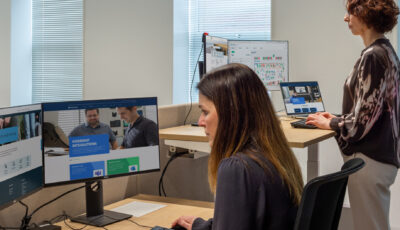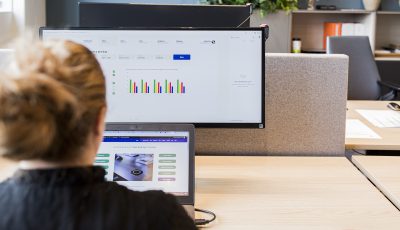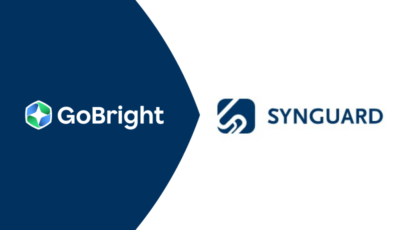Remote work has transformed from a trend to a mainstream phenomenon, allowing professionals to work from anywhere. With the advancement of technology and the re-shaping of work environments, many businesses have quickly adapted to remote working solutions. According to Statistics Netherlands (CBS, 2024) in 2023 alone, over 52% of the Dutch population claimed to work from home at some point. Managing remote workers offers great flexibility and access to a large talent pool, however it does pose some challenges for managers due to the decentralised workforce. This article explores these challenges and offers practical solutions to manage this new way of working.
Common challenges of managing remote teams
Managing remote workers presents challenges that range from difficulty in communication to loneliness. At the core of these difficulties lie the physical absence of an employee, which poses an overall threat to the productivity of the entire team. Let us take you through some of these challenges.
Challenge in communication
Communication is vital for the success of a team, especially for a team consisting of (partially) remote workers. Without face to face interactions it can often be difficult to be in line with one another. Possible issues include miscommunication, misinterpretation of cues and delay in communication due to different time zones. Let’s not forget possible cultural differences which can hinder effective collaboration within a team. The root for this specific problem must be addressed to ensure healthy, stimulating and positive communication.
Distraction at home
Managing remote workers is challenging due to the many distractions they face at home. Unlike traditional offices, homes aren’t designed for work, leading to interruptions from household chores, family members, and non-work activities. But distractions can also occur when you are traveling frequently and working on the go. In coffee shops, hotels, flexible workspaces throughout the country. These distractions can reduce productivity and focus, so managers must address these challenges effectively.
Lack of company identity
Remote work can fade company identity as employees, separated from the office and colleagues, may struggle to feel connected to the companies’ culture and values. This detachment can decrease motivation and loyalty, making employees feel more like contractors than team members. To combat this, effective communication and regular engagement are essential in fostering unity and maintaining company identity among remote workers.
No proper onboarding for new employees
Allowing new employees the time to be properly trained, with colleagues guiding them through all processes and tasks, is crucial. However, this experience is different when working remotely. Therefore, it’s essential to establish a robust onboarding program that includes online components, ensuring that colleagues have the opportunity to get to know each other. Provide comprehensive training programs that can be completed online to support remote workers effectively.
Not the right resources at home
When employees transition from a structured office environment to a home setting, they often face a lack of necessary tools and infrastructure. This includes everything from reliable high-speed internet and ergonomic furniture to a printer. Without these essentials, productivity can suffer, and the quality of work can decline. The absence of a dedicated workspace can cause distractions and interruptions, reducing efficiency. Working from the kitchen table may be comfortable briefly but isn’t ideal for long-term productivity. This can also disrupt work-life balance, impacting mental health and job satisfaction.
Loneliness among remote workers
Loneliness poses a considerable yet frequently disregarded challenge for remote workers. Without the usual social exchanges found in traditional offices, feelings of isolation and loneliness can emerge, impacting mental well-being and job satisfaction negatively. Managers must recognise this issue and proactively assist remote staff in feeling connected and appreciated, despite physical distance.
Here is how to manage a remote team
Establish clear communication channels
Effective communication lies at the heart of successful remote team management. Utilise a combination of tools such as Microsoft 365, WhatsApp, Slack or via e-mail to facilitate both synchronous and asynchronous communication. Clearly define which channels are used for what purposes to avoid confusion.
Set expectations and goals
Remote employees thrive when they have a clear understanding of what is expected of them. Establish SMART goals (Specific, Measurable, Achievable, Relevant, Time-bound) and communicate them transparently. This helps in aligning individual efforts with overarching team objectives.
Create a culture of trust when managing remote workers
Trust is crucial in remote team dynamics. Managers should trust their team members to deliver results without micromanaging. Encourage open communication, feedback, and autonomy. Regular check-ins can help in maintaining visibility without impeding productivity. One of the key benefits of remote work is flexibility. Acknowledge and accommodate different work styles and time zones within your team. Focus on outcomes rather than hours worked, as long as deadlines are met and performance standards are maintained.
Technology for collaboration
Regular check-ins and virtual meetings create connection and accountability within remote teams. Leverage productivity tools and apps that help manage time and tasks effectively. Tools like Microsoft 365 or Google Workspace can assist in setting deadlines and facilitating communication among team members. Tools like Jira and Trello can streamline project management tasks. You can also use GoBright’s Week Planner to track when your colleagues are in the office or working remotely. And it is very useful for file sharing, and real-time collaboration on documents. Ensure that all team members are comfortable using these tools.
Smart workplace solutions
If you want to work at the office, you always want to have a place to sit. With GoBright, you can easily book a Desk or Meeting Room in advance, and you can come prepared to the office. Understand which days are peak days so that you and your team can coordinate which days to be in the office. Organise your workweek more efficiently with your colleagues, and encourage knowledge sharing and collaboration. Expecting visitors? With GoBright’s visitor management, you can effortlessly register visitors, send notifications, and effectively oversee their visits, ensuring a seamless guest experience at your company.
Encourage social interaction
Remote work can sometimes feel isolating. Encourage informal interactions among team members through virtual coffee breaks, team-building activities, or casual chat channels. Building personal connections fosters a sense of friendship and improves teamwork. Schedule regularly various meetings, such as one-on-one sessions, weekly kickoffs, and end-of-week reviews. This way, you also know what everyone is working on and can help each other out when needed.
Provide ongoing support and resources
Remote employees may face unique challenges that can impact their productivity. Ensure they have access to necessary resources and support systems. Offer training opportunities, mentorship programs, or wellness initiatives to help them thrive professionally and personally. Ensure a good home workplace and that everyone has the resources they need, just like in the office. For example, an ergonomic office chair or a height-adjustable desk, and employees will star healthy.
Monitor performance effectively
Establish clear metrics to evaluate remote team performance. Regularly review progress towards goals and provide constructive feedback. Performance evaluations should be based on agreed-upon criteria to ensure fairness and transparency.
Continuously improve processes for managing remote workers
Remote work is a dynamic field that requires ongoing optimisation. Solicit feedback from your team on what is working well and what could be improved. Adapt your strategies based on lessons learned and industry best practices.
Remember, managing remote teams is not just about overseeing tasks; it’s about empowering individuals to thrive in a virtual environment while achieving collective goals.











